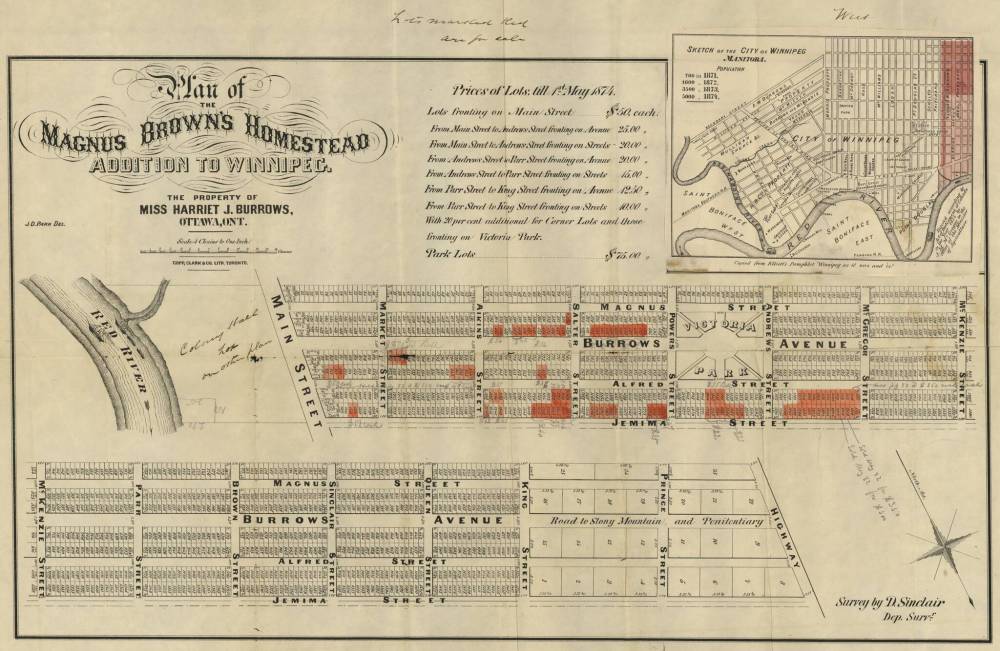Alfred Burrows named many North End streets
Advertisement
Hey there, time traveller!
This article was published 07/09/2022 (1172 days ago), so information in it may no longer be current.
The subdivision of Magnus and Ann Brown’s homestead in 1874 resulted in the creation of many well-known North End streets.
Magnus Brown was born in the Orkney Islands and came to Canada around 1839 to work as a trader for the Hudson’s Bay Company. After many years of company service, he was granted a homestead of about 200 acres stretching from Main to McPhillips streets.
Winnipeg became a city on Jan. 1, 1874, and the Browns, by then in their 60s with no children, wanted to cash in on the resulting land boom and sold their land. Sadly, they did not have much time to enjoy their new wealth. Magnus was paralyzed, likely by a stroke, around 1878 and died in 1888 at the age of 78. Ann died in 1891 at the age of 90.

The plan of the Magnus Brown Homestead Addition to Winnipeg (1874) by D. Sinclair for Copp, Clark & Co. Lithographers, Toronto.
As stipulated in Magnus Brown’s will, upon Ann’s death the couple donated $2,000 to St. John’s Cathedral, $1,000 to the General Hospital, and $500 to St. John’s College Ladies’ School as a scholarship fund.
It was Alfred Burrows, chief clerk of the local Dominion Land Office, who purchased the Brown land. He put it under his sister Harriet’s name while he worked on plans to subdivide it, then quit his job in August 1874 to market it.
According to George Elliott’s book, Winnipeg as It Is in 1874 and as It Was in 1860, Burrows “laid (Brown’s estate) out and planned it with a fine park in the centre, dug a drain of two miles in length, laid down a sidewalk for nearly a mile, and finished it off by giving away fifty lots for free to attract residents.” Burrows, of course, was the grandest of the avenues, featuring a centre boulevard.
The first sale of lots took place in September 1874 and all 75 were snapped up for an average of $35 each. Additional lots were sold every year or so until 1883 and the acres closest to McPhillips Street were subdivided in 1903.
As Burrows’ subdivision transformed from a set of drawings to real life, most of his original street names remained intact.
Of the avenues, Magnus, Burrows, Alfred and Jemima, only the latter was changed — to Grove Street — before being renamed Aberdeen Avenue in 1893.
As for the short cross streets, the two closest to Main Street, Market (now Charles Street) and Aikins, already existed further south and would eventually join up as the land between them was subdivided.
Maps from the era show that the area west of Aikins had no matching streets to align with and it was certainly Burrows who named Salter, Powers, Andrews, McGregor, McKenzie, Parr, Brown (now part of Arlington Street), and Sinclair. As other homesteads around the property were subdivided, they adopted these street names.
Burrows, according to an 1879 Free Press article, fled Canada for the U.S. “on account of certain irregularities in business matters” and was never heard from again. Many of the streets he named carry on to this day.




